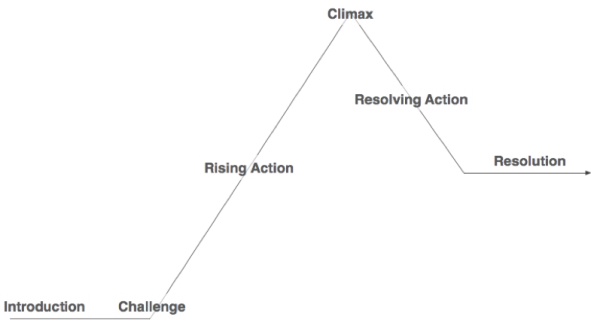Customer journeys are the hot trend in marketing – for good reason. Journey maps can outline everything from specific touchpoints to the people and technologies needed to support those interactions. The best journey mapping activities also try to account for customer actions and attitudes.
To put it succinctly, they are a superb tool for outlining the ways your business and consumers interact with each other.
The Power of Storytelling
Why do customer journeys have so much power for strategists and designers? They are essentially a storytelling device.
Unlike most retail experiences, B2B marketing almost always involves some sort of high involvement decision-making process. (For example, buying a huge excavator isn’t exactly an impulse buy.) The purchase funnel plays out over long periods of time. It usually involves many different interactions between customers and businesses. And it almost always includes multiple people
collectively making a decision, based on an organizational goal or need.
With journey maps, we can frame up a story as it is happening. In other words, we can tap into the story experience as it unfolds in real time – with the audience playing a central role.
4 Storytelling Aspects of Journey Mapping
1. The Characters
Essentially, a journey map outlines the plot between two major characters: a business and its audience. We typically discover the story how they meet, get to know each other, and ultimately decide to pursue some sort of relationship (whether it’s a brief or an ongoing one).
The Audience: Personas have become fairly standard tools to describe different audience segments. A persona should do two basic things: describe their needs and attitudes, and describe something about their actions or activities that’s relevant to the experience we want to implement.
The Business: The equivalent of a persona is a solid brand framework. Beyond logos and colorways, a brand can determine the identity that a company wants to present publicly. A brand is the company’s mission, values, and promise, both internally and externally. Done well, a brand captures the company’s ethos, and becomes the north star that guides how that company grows, serves its audience and serves its industry.
2. Emotional Arc: Connect & Evolve
For designers and strategists, journeys bring together personas and brands. Within every interaction between businesses and audiences, these tools encourage us to see the value proposition as something more than just a practical exchange for a good or service. Nurturing that exchange often means providing something that is timely and meaningful.
In narrative terms, the story of the journey will have an arc, similar to this one.

This model is one of the more common ways to represent story experiences and identify the important moments within any narrative’s plot. In the case of a strategist working on a client’s customer journey, this model can be a useful framework – identifying what emotional or cognitive connection can be made
between a brand and persona at a given point.
3. Plot Points: What Happens & When
If we can better understand the story arc, we can anticipate how to nurture the connection between business and audience from one touchpoint to the next. Doing so successfully obviously improves the chances for a strong relationship and conversion.
For high involvement decisions in B2B, any given interaction may involve multiple people (e.g., dealers and customers, purchasing agents and managers). We have to design for specific touchpoints that we can directly access, as well as try to support or encourage specific activities in moments between those touchpoints.
This is where we combine strategic design thinking with technologies that can support everything from social experiences to marketing automation.
4. Plot Devices: Content to Technology
Most stories have something that helps move the story along. Think of the Millennium Falcon as a way to get people across the galaxy in the Star Wars movies. It’s a device for the plot to help give a sense of scale, as well as move the characters from one setting to the next.
Timely, smart content marketing is a similar device within a customer journey. So are marketing automation and social listening. Working smoothly behind the scenes, they help promote the brand and products in intelligent ways that further engage customers.
Remember, this story concept isn’t about creating a whole new approach. It’s about connecting elements of your customer journey in a more meaningful way. Stories are engaging because they involve more than a transaction. And that is really why they can help your organization find – and hold onto – the right perspective.

